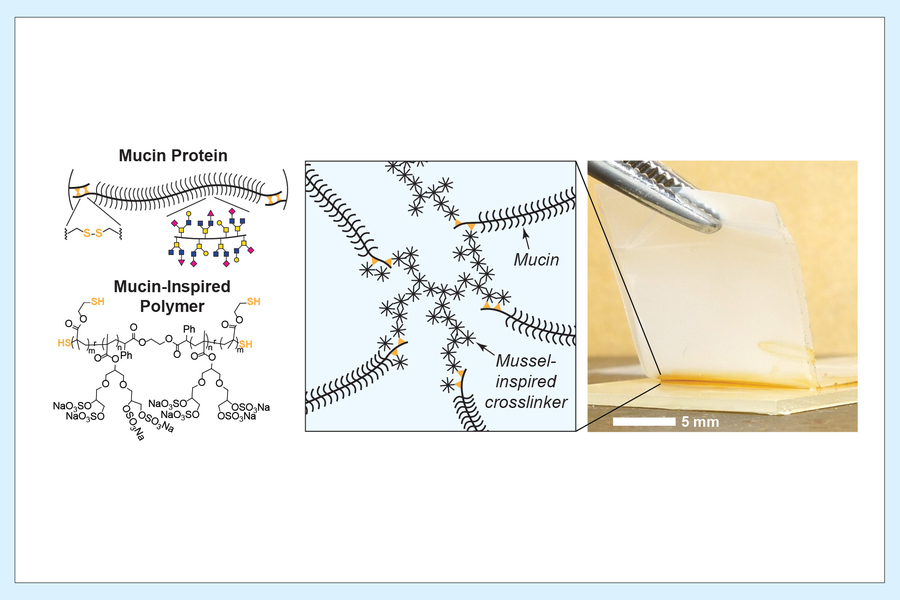Within the animal kingdom, mussels are masters of underwater adhesion. The marine molluscs cluster atop rocks and along the bottoms of ships, and hold fast against the ocean’s waves thanks to a gluey plaque they secrete through their foot. These tenacious adhesive structures have prompted scientists in recent years to design similar bioinspired, waterproof adhesives.
Now engineers from MIT and Freie Universität Berlin have developed a new type of glue that combines the waterproof stickiness of the mussels’ plaques with the germ-proof properties of another natural material: mucus.
Every surface in our bodies not covered in skin is lined with a protective layer of mucus — a slimy network of proteins that acts as a physical barrier against bacteria and other infectious agents. In their new work, the engineers combined sticky, mussel-inspired polymers with mucus-derived proteins, or mucins, to form a gel that strongly adheres to surfaces.

